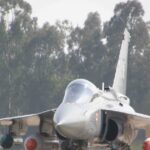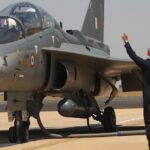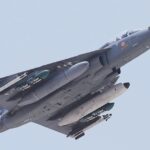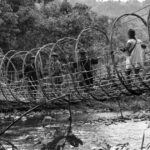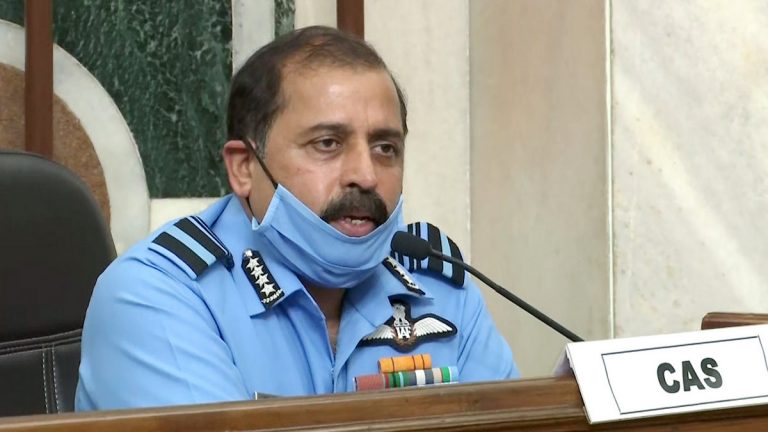
Table of Contents
SOURCE: THE PRINT
The Indian Air Force (IAF) is likely to place an order for 83 Light Combat Aircraft (LAC) Tejas MK IA soon and expects deliveries to commence in three years, Air Chief Marshal R.K.S Bhadauria told ThePrint in an email interview. Bhadauria further said the state-owned Hindustan Aeronautics Limited (HAL) is expected to complete the delivery of 70 Hindustan Turbo Trainer-40 (HTT-40) by 2026. The IAF is also sure HAL will complete the full development of the Light Utility Helicopter (LUH) this year and is already progressing on the procurement of an initial batch of the choppers.
The Air Chief’s statement comes amid a renewed push for the indigenous defence industry by the Narendra Modi government under its ‘Atmanirbhar initiative’ given the economic downturn in the wake of the Covid-19 pandemic.
Earlier this month, Finance Minister Nirmala Sitharaman announced a slew of measures such as a negative list for the import of defence equipment which could be built in India, a separate capital budget for indigenous weapons procurement, and corporatisation of the Ordnance Factory Board (OFB), among others.
On indigenous Tejas, trainers
The Air Chief said that the order for 83 Light Combat Aircraft (LCA) MK IA is likely to be placed soon and the deliveries will commence in three years.
On Wednesday, Bhadauria flew a Tejas, which is part of the IAF’s 45 Squadron, at the Sulur air force station.He was in Sulur to operationalise the IAF’s 18 Squadron, called the Flying Bullets.
“In the long run, the IAF will have 40+83 Tejas Mk I/IA and around six squadrons of Tejas Mk II. Eventually, we aim to boost our capabilities with the fifth generation plus AMCA (Advanced Medium Combat Aircraft),” he said.
“The IAF’s current induction plan, coupled with capability enhancements underway through upgrades of many aircraft and weapons, will take care sufficiently of our current threat scenario in the short term,” he added.
Currently, the IAF has 30 active fighter squadrons.
Bhaudauria said depletion will be offset by deliveries of Rafale and the LCA MK IA, while a follow-up acquisition plan will start to recover the overall squadron strength.
Asked about the projected timelines for India’s indigenous trainer program and the plans to fill up the gaps in the pilots’ trainer programme, Bhadauria said the IAF is assisting HAL with concurrent user assisted trials on HTT-40 to cut down on development timelines.
“We expect to start receiving the trainer in 2022 and complete deliveries of 70 aircraft in four years. The HTT-40 will augment the already inducted trainer aircraft in a three-stage training programme,” he said.
He added that the exact cost details of the HTT-40 are being worked out by HAL.
The state-owned firm’s programme to develop a basic HTT-40 trainer is nearly six years behind schedule.
The IAF is currently running low on trainers with plans to procure more aircraft hitting a dead end. The crisis reportedly had affected the training of pilots due to a lack of aircraft.
In an earlier interview to ANI, Bhadauria had said that the IAF shelved its plans to buy 38 Pilatus basic trainer aircraft from Switzerland and 20 additional Hawk planes from Britain.
Currently, Pilatus PC 7 turbo trainers are used for the first stage of training of Air Force pilots. For the intermediate training, Kiran Mk 2 are being used, which are being phased out, while the Hawk jet trainers are being used for advanced training.
As many as 75 of the aircraft were bought under an emergency purchase in 2012, however a plan to get an additional 38 aircraft was cancelled following allegations of corruption in the deal.
Another indigenous programme to develop an intermediate jet trainer was delayed by nearly 15 years over quality concerns.
Asked about the status of the current LUH programme, Bhadauria said it had proven productive but still needs to demonstrate some operational requirements at high altitude and fix some flying qualities issues.
“We are confident that HAL will complete the full development this year and the IAF is already progressing a case for procurement of an initial batch of Limited Series production of LUH,” he said.
Apart from improvements to equipment and infrastructure, Bhadauria said that the IAF will continue inducting women into fighter streams in the future as a regular mode of entry.
“The numbers will depend on volunteers and those who clear the selection and training process,” he said.
Presently, the IAF has a total of 111 women pilots, of which nine are on fighters and the rest are on transport and helicopter fleets.
DRDO challenges lies developing in niche tech
Air Chief Marshal Bhadauria said that the Defence Research and Development Organisation’s technology and quality issues have improved significantly over the years in many areas such as ground radars, air-to-air missiles, missile defence systems, networking, etc., even as some challenges lie in niche technologies.
The LCA programme has also undergone major improvements, he said, adding, “Current challenges lie in niche technologies such as sensors, guided weapons and advanced technologies. To counter rapidly evolving threats, timely deliveries are essential to sustain the capability and technological edge.”
He emphasised that “timely deliveries” are essential to sustain the capability and technological edge to counter “rapidly evolving threats.”
Talking about making HAL more accountable for quality, timely delivery and lifetime support, he said there are plans underway to instil greater user participation at various levels by deputing more IAF officers to HAL.
“I am sure HAL will evolve its structures and processes to become competitive,” he said.
Jaguars to operate well beyond 2035
Bhadauria addressed the issue of how likely budget cuts on the planned induction of weapon systems could impact the IAF, saying there is always a constant endeavour to balance security needs with budget constraints.
“The IAF is already prioritising its capital and revenue expenditure plans for the year to adapt to the evolving budget realities. Our focus would be to economise and reprioritise without affecting our immediate combat capability requirements,” he said.
The Air Chief had earlier told ANI that the upgradation of 80 Jaguar fighter planes with engines from Honeywell Corporation America has been shelved.
However, he told ThePrint that the IAF have initiated other measures to sustain the engines and maintenance aspects of the fleet.
“Jaguar fleet is expected to operate well beyond 2035 with its upgraded avionics, sensors and EW (electronic warfare),” he said.
Bhadauria said while there are logistical and operational challenges of systems from different countries, especially of Russian and western origin, these are overcome by proper procedures, management and technology.
“There is no effect on interoperability as the IAF has trained for several decades with these systems,” he said.
“However, we are focused on reducing the number of types of aircraft in the future to optimise the logistical and maintenance issues,” he added.
https://defencenewsofindia.com/will-order-for-83-tejas-soon-hal-to-deliver-70-aircraft-by-2026-iaf-chief-bhadauria/

